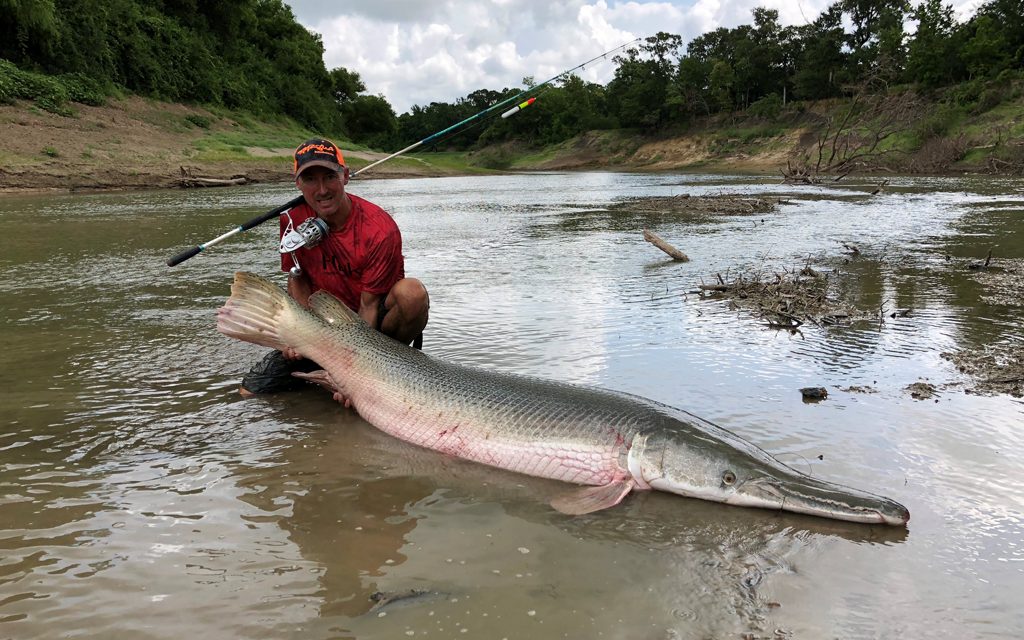There are said to be two large alligator gars in Round Rock. It was comforting to know they aren’t in the San Gabriel River; I’ve waded it often and turned over in my canoe there once. I’ve never seen an alligator gar — and probably most Texans have never heard of them. Texas Parks and Wildlife Department (TPWD) says some have been taken weighing over 300 pounds. That’s almost as heavy as some of A&M’s linemen. The official state record alligator gar scaled in at 279 pounds, caught in 1951 by Bill Valverde in the Rio Grande. However, a Fox News report by Jennifer Earl says according to TPWD, a 1953 catch weighed 302 pounds. Why the 302-pound gar isn’t the state record could be explained several ways. It might have been weighed on non-certified scales, or it might have been caught by TPWD biologists during a net survey. Regardless, it makes good copy to report that gars in Texas have been caught weighing between 279 and 302-pounds. As the old editor in “The Man Who Shot Liberty Valence” said, “When legend becomes fact, print the legend.” Ms. Earl also reported on a recent catch estimated at 250 pounds, guided by Bubba Bedre. He hadn’t brought his scales that day, so the weight is only an estimate. Guiding on the Trinity River, Bedre was hosting people from Denmark working on a magazine article. His guide business is known as Capt. Bubba Bedre’s Garzilla Alligator Gar Guide Service in Elkhart, Anderson County. Bedre’s gar was caught using cut carp for bait on a 4/0 treble hook. They released the monster back into the river. He formerly bow-fished gars but turned to rod and reel fishing and catch-and-release when big gars became scarce. As ferocious as they look, alligator gars are not reported to attack humans — thankfully! I do, however, remember reading accounts of fools swimming the Mississippi River long distances downstream being bitten by fish that were thought to be either large catfish or gars. Lance Robinson, a senior biologist with the TPWD coastal fisheries division, said he had never heard of any attacks on humans. He did say they have caught several seven-foot-long gars in seines in Galveston Bay. Gars live in brackish water and many Texas rivers, especially in East Texas. There is even a report of an alligator gar in Lake Travis. All this gar gabble was brought to mind by a TPWD proposal last week making it illegal to bow-fish for alligator gars on the Trinity River at night. Alligator gar catches must be reported within 24-hours except on Falcon. Declining population and over-harvest are likely, prompting a limit of only one per day — under 48-inches. They don’t reproduce until they reach that size, and then only during spring or summer floods. Over 20 gar bow-fishermen testified against the proposal. It was adopted as a conservation measure, however. The proposal also provided for a drawing to allow one over-size gar per year by selected anglers. JJ
Woods, Waters, and Wildlife: Godzilla Gars





